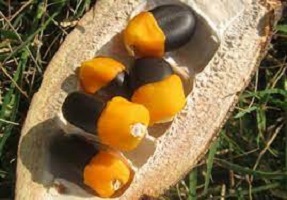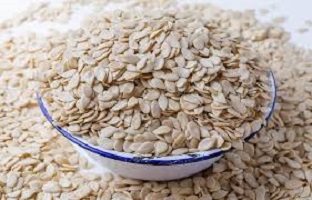Local Soup Thickeners High in Dietary Fiber & Nutritional Values
Soup Thickeners High in Dietary Fibre & Nutritional Values

Soup thickeners aren’t a novel concept. They’ve been used to provide certain textures to our meals for millennia all across the world. Corn flour, corn starch, cream, yogurt, white flour, blended rice, and other thickeners are common.
Soup is a hot dish produced by blending components like vegetables and green leaves with juice, water, or another liquid.
Checkout >>>
Hot soups are further distinguished by the extraction of tastes from solid components in liquids in a pot, resulting in a broth.
Soups are traditionally divided into two categories:
- Thick soups
- Clear Soups
Thick soups are categorized conditional upon the type of thickening agent used:
Purées are vegetable soups thickened with starch; bisques are thickened with cream and puréed seafood or vegetables; cream soups can be thickened with béchamel sauce; and veloutés are thickened with eggs, butter, and cream.
Rice, lentils, flour, and grains are also widely used to thicken soups and broths; many popular soups also include carrots and potatoes.
Dry mixes of vegetable, chicken foundation, potato, pasta, and cheese soups are also available, ready to serve by simply adding hot water and occasionally fresh ingredients such as meat or vegetables.
Thickening agents, often known as thickeners, are compounds that, when added to a mixture, increase its viscosity while leaving other attributes, such as flavor and scent, untouched.
In Nigeria, and traditionally in Africa, millions of people consume food thickeners. The average family consumes at least one meal mixed or pounded with accompanying soup every day.
Most Nigerian states, including Imo, Anambra, Akwa-Ibom, and Ondo, have seen an upsurge in the demand for Soup Thickeners Flours from ‘Achi’, Ede, ‘Ukpo,’ and ‘Ofor.’
There are, however, several traditional soup thickeners that are less well-known and provide much more than just texture to our cuisine.
They’re also high in dietary fiber. This is unsurprising given that they belong to the legume (bean) family, which is recognized for its high dietary fiber content.
Dietary fiber has a positive impact on the body’s blood glucose and insulin levels. They aid in the reduction of blood sugar and cholesterol levels.
Obesity and non-communicable diseases such as Diabetes Mellitus, heart disease, and cancer are all reduced by eating a high-fiber diet.
Dietary fiber promotes regular bowel movements by bulking up stools and reducing constipation. They also aid in the attainment of a healthy weight.
Traditional Soup Thickeners: How to Thicken Soups?
- Achi
Brachystegia Eurycoma is known as Achi in Igbo. In Yoruba, it’s called Akolodo, in Efik, Ukung, and in Bini, Okwen.
Achi is a lesser-known legume seed that is used as a soup thickening in Nigeria’s south. The Achi tree can be found in Nigeria’s south and Cameroon’s west.
Aside from the seeds, the stem has long been utilized to aid in wound healing and infection therapy.
Achi Nutritional Values
Achi has 70.2 grams of dietary fiber per 100 grams of edible portion. It also has 13.9 grams of protein, 11.5 grams of fat, and 2.6 grams of carbohydrate.
They have 13.7mg of calcium, 10.5mg of iron, 250mg of phosphorus, and 1.9mg of zinc in terms of mineral content.
- Ofor
Ofo (Igbo), Detarium microcarpum, is known as sweet Dattock or sweet detar. It is an African food crop tree belonging to the legume family.
Ofo is often made into flour and used as a thickener and flavoring for soup. It can be eaten raw or cooked. Ofo is known to be high in antioxidants.
Ofor Nutritional Values
100g edible portion of raw Ofo provides 19.6g of dietary fiber.
It also includes 10.6g of protein, 17.2 of fat, and 33.9g of available carbohydrates. For mineral content, they contain 300mg of calcium, 7.5mg of iron, 154mg of phosphorus, 3.6mg of zinc, magnesium 206mg, and potassium 1460mg. The dietary fiber content reduces significantly when cooked.
Apart from the seeds, the Sweet Dattock tree has other benefits. The fruit is sweet and eaten fresh while the pulp has been used in making cakes.
The leaves, bark, and roots have also been used traditionally to treat a wide range of ailments from malaria, venereal diseases, intestinal worms, and other digestive problems like diarrhea.
- Akparata
Akparata is the Igbo name for the seeds of the Counterwood tree, Afzelia Africana. In Yoruba, it is called Apa, and Kawo in Hausa. The counter wood tree is a drought-resistant leguminous tree crop found in Nigeria, Senegal, Sudan, Uganda, Tanzania, and India.
Apart from the seeds, the leaves can be cooked as vegetables and the blooms can be used as sauces. Traditional cures for constipation, vomiting, internal bleeding, and pain relief have all been utilized with the herb.
Akparata Nutritional Values
32.2g dietary fiber per 100g edible quantity of roasted and milled Akparata It also has 18 grams of protein, 25.1 grams of fat, and 7.5 grams of carbohydrate.
They include 291 mg of calcium, 9.6 mg of iron, 421 mg of phosphorus, and 3.7 mg of zinc in terms of mineral content.
They’ve been tested as local stabilizers in yogurt manufacturing and as a wheat flour substitute in biscuit making. Under normal conditions, the seeds can be stored for 33 months.
- Ukpo
Horse eye beans, Mucuna Sloanei/Mucuna urens, are known in Igbo culture as Ukpo. In Yoruba, it’s known as Apon.
As a soup thickening, the seeds are cracked, cooked, dehulled, and ground into powder.
They contain antinutrients such as phytate, tannins, lectins, and cyanogenic glycosides (which interfere with protein and carbohydrate digestion), although these antinutrients are considerably reduced when cooked (90 minutes) or toasted (60 minutes).
It can obstruct the digestion of vital nutrients if not adequately handled.
Ukpo Nutritional Values
Ukpo has 51.1 grams of dietary fiber per 100 grams of edible portion. It also has 21.2 grams of protein, 17.8 grams of fat, and 7.5 grams of carbohydrate.
Horse eye beans, Mucuna Sloanei/Mucuna urens, are known in Igbo culture as Ukpo. In Yoruba, it’s known as Apon. As a soup thickening, the seeds are cracked, cooked, dehulled, and ground into powder.
They contain antinutrients such as phytate, tannins, lectins, and cyanogenic glycosides (which interfere with protein and carbohydrate digestion), although these antinutrients are considerably reduced when cooked (90 minutes) or toasted (60 minutes). It can obstruct the digestion of vital nutrients if not adequately handled.
Ukpo has 51.1 grams of dietary fiber per 100 grams of edible portion. It also has 21.2 grams of protein, 17.8 grams of fat, and 7.5 grams of carbohydrate. It has 14.2mg of iron, 3.3mg of zinc, 26.5mg of calcium, and 271mg of phosphorus in terms of micronutrient content.
The tree’s leaves are used as animal feed in northern Nigeria, in addition to being utilized as a soup thickening.
- Agbara
Mucuna pruriens, often known as Velvet beans, is known in Igbo as Agbara. To name a few, there’s the Mauritius velvet bean, Bengal bean, cowhage, cowitch, lacuna bean, Lyon bean, and irritable bean.
Horse-eye beans are in the same family as this bean.
It is grown in Africa, Asia, America, and the Pacific, and it is utilized as both human food and animal feed. Seeds, leaves, pods, and roots have all been used to treat a variety of diseases.
Velvet beans have long been used to cure Parkinson’s disease, high blood pressure, and male infertility, with the pods also being used to rid the body of intestinal worms.
Traditional healers in Nigeria’s Plateau State employ the seed as a preventive anti-snake bite cure, and beans paste has been used to absorb the venom from scorpion stings.
Agbara Nutritional Values
Raw Agbara has 20.4 grams of dietary fiber per 100 grams of edible food. It also has 28.8 grams of protein, 4.7 grams of fat, and 33.9 grams of carbohydrate.
They have 96mg of calcium, 5.4mg of iron, 401mg of phosphorus, and 3.1mg of zinc in terms of mineral content.
It, like many legumes, includes antinutrients that can obstruct nutrient assimilation. As a result, the seeds must be thoroughly treated before being consumed.
- Oats
Oats as a Thickening Substitute for Cocoyam in Soups!
Quaker Oats is of the flours that form the greatest alternative to cocoyam in Nigerian soups.
It is an alternative to cocoyam when making Nigerian soups that necessitate the use of cocoyam in making soups like Bitterleaf and Ora.
When using quaker oats paste, use half to three-quarters of the amount of cocoyam paste you would use for a pot of soup.
For example, if you normally use four tablespoons of cocoyam paste in a pot of soup, use three tablespoons of quaker oats paste in the same pot of soup.
Soup Thickeners: Putting it all together in a nutshell
These 6 soup thickeners are high in dietary fiber, which is essential for good health and illness prevention.
Because beans are known to have compounds that interfere with the digestion of key nutrients, it’s best to make sure they’ve been thoroughly processed before eating them.


